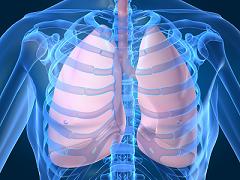 Asbestos poisoning occurs when asbestos fibers build up in the lungs after exposure. Asbestos poisoning occurred mostly in commercial and industrial settings during the 1970’s. Today it is more commonly seen in asbestos removal projects inside the home. If care is not taken to prevent asbestos exposure, asbestos poisoning can progress into asbestosis, which can cause permanent lung tissue damage.
Asbestos poisoning occurs when asbestos fibers build up in the lungs after exposure. Asbestos poisoning occurred mostly in commercial and industrial settings during the 1970’s. Today it is more commonly seen in asbestos removal projects inside the home. If care is not taken to prevent asbestos exposure, asbestos poisoning can progress into asbestosis, which can cause permanent lung tissue damage.
First Aid treatment for asbestos poisoning begins with decontamination. Directly after exposure occurs:
- Remove all affected clothing
- Scrub all surfaces of the body thoroughly with soap and water. This will prevent lingering fibers from being inhaled.
- Use an ultrasonic cool-mist humidifier to help break up any bronchial secretions from the asbestos. Doing so allows affected persons to manually cough and clear their lungs.
- Asbestos poisoning can cause chest pain. The pain can be treated with over-the-counter products including ibuprofen. In severe cases, your doctor may also prescribe bronchial dilators to help keep your airways open.
Asbestos poisoning does substantial damage to the lungs. If you have been exposed, take proper preventative measures to protect the lungs from further damage.
- Stop smoking: asbestos exposure dramatically increases the risk of lung cancer.
- Asbestos-damaged lungs are also more prone to serious cases of pneumonia, so it is important to take preventative measures to avoid getting sick during the cold and flu season.
Sources:
- Centers for Disease Control and Prevention: http://www.cdc.gov/niosh/topics/asbestos/
- LiveStrong.com: http://www.livestrong.com/article/27657-asbestos-poisoning-treatments/